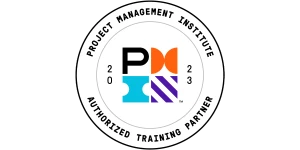Optimizing BPM And Six Sigma or BPI
Business Process Management argues that management by common sense cannot be exemplified as management at all!! Analysis and objective study tends to bring balance to this equation, as well as our business practice and endeavor.
Both BPM and Six Sigma deals with the dynamics of systematic, data-based experience and information, assisting us in our execution and operations, cutting costs and waste, growing our shareholder value and profits, methodically, strategically, coordinated, focused, with dedicated resources and combined effort. Experimentation and scientific study drives these philosophies into the core of our business world, practice and industries, to assist us in our local and global enterprise and pursuits.
Six Sigma is one such business management philosophy, methodology and hands-on practical approach for effecting change, delivering substantial and lasting results over time, leading to more efficiencies, reduced waste and cost. It draws on a proven set of tools and methods, problem-solving principles and tools, combining experience with fact-based analysis, leading to breakthrough performance.
On a macro and micro process-level, in a simultaneous, coordinated effort, we strive and work actively, in a planned and systematical, scientific way in an on-going pursuit to get better, increase and guarantee customer satisfaction, innovate and consistently deliver quality through lean and effective process – this is the noble pursuit of Six Sigma and BPM. It looks to change the status quo, with an eye on enterprise optimization, resource and business process management.
With Six Sigma business management strategy, principles and practice, even business process management, morphs into becoming about more than the mere processes themselves. It takes on a life of its own and in essence, represents business performance excellence management, that is on-going and never ends, it does not settle for less, compromise on quality, and does not merely want to get by and leave success/failure up to random chance per se, but takes an active role in effecting and executing it – and by doing so, excel (and continue to do so and even grow/expand), in the process!
Disciplined, analytical and focused on process and outcome customer voice, input, specifications, critical-to-quality factors and more are impetus, directives, guidelines, checkpoints, end-goals and the ultimate in pursuit is what is stands for and is all about!
Six Sigma as a philosophy purports a simple premise: DOING THE RIGHT, THING(S), RIGHT, THE FIRST TIME and consistently so, reducing uncertainties and variability, minimizing risk , while being focused on being a low-cost operator, reducing waste through prevention, not merely inspecting the way to quality – in essence ‘fixing’ the process(s), not just focusing on the outcome.
In that sense it does suggest a bit of the paradigm shift and counterintuitive requirements of these business management approaches, strategies and methodologies, that will take modern business into the next century, where it is all about not merely surviving, BUT thriving, building collaborative, mutually beneficial value-propositions, that represent a win-win for all parties and stakeholders.
Six Sigma then becomes the measurement and active management channel and utility of business and process risk. Setting stretch goals and benchmarks for excellence through a rigorous, disciplined hypothesis-driven problem solving that reminds somewhat of the scientific method, f act-based and data driven solutions to business and process issues, rather than relying, voting and operate based on guesstimates and opinions! As one Six Sigma guru put it: it is about measuring what we really do, not what we think we do, or think we should be doing. Six Sigma proposes diagnostics for design and improvement of new and existing processes, through the use of basic and advanced tools
Measurement is a fundamental value and belief of Six Sigma. This scientific pursuit and approach to business, is built on defining problems to solve and then solving them, teaching others and reaping the benefits, revisiting and keeping at it, for life! Some experts believe that it is the hardest step in any process and endeavor, to define something or what the problem seems to be, or process issues, in such as way that it can constructively be scientifically scrutinized and studied, (as expressed in metrics, data and statistics).
Bringing clarity and reference, evidence and reliability, facts and data, Six Sigma is both an overall approach to business process management as well as the tool and utility to execute it well. The relationship goes hand-in-glove!
A final word in closing: BPM and Six Sigma help us rise above mediocrity, as we are so often used to the way things are that, it rarely OR never even occurs to us, to think about them or to look for ways to change or improve them! Making the question ‘how we get better’ a new one entirely! This will require bold leadership and commitment from one and all.
Peter Peterka is President of Six Sigma us. For additional information on Six Sigma Green Belt or other Six Sigma Black Belt programs contact Peter Peterka.
Author: Peter Peterka Google
Published 09/3/2008
SixSigma.us offers both Live Virtual classes as well as Online Self-Paced training. Most option includes access to the same great Master Black Belt instructors that teach our World Class in-person sessions. Sign-up today!
Virtual Classroom Training Programs Self-Paced Online Training Programs






